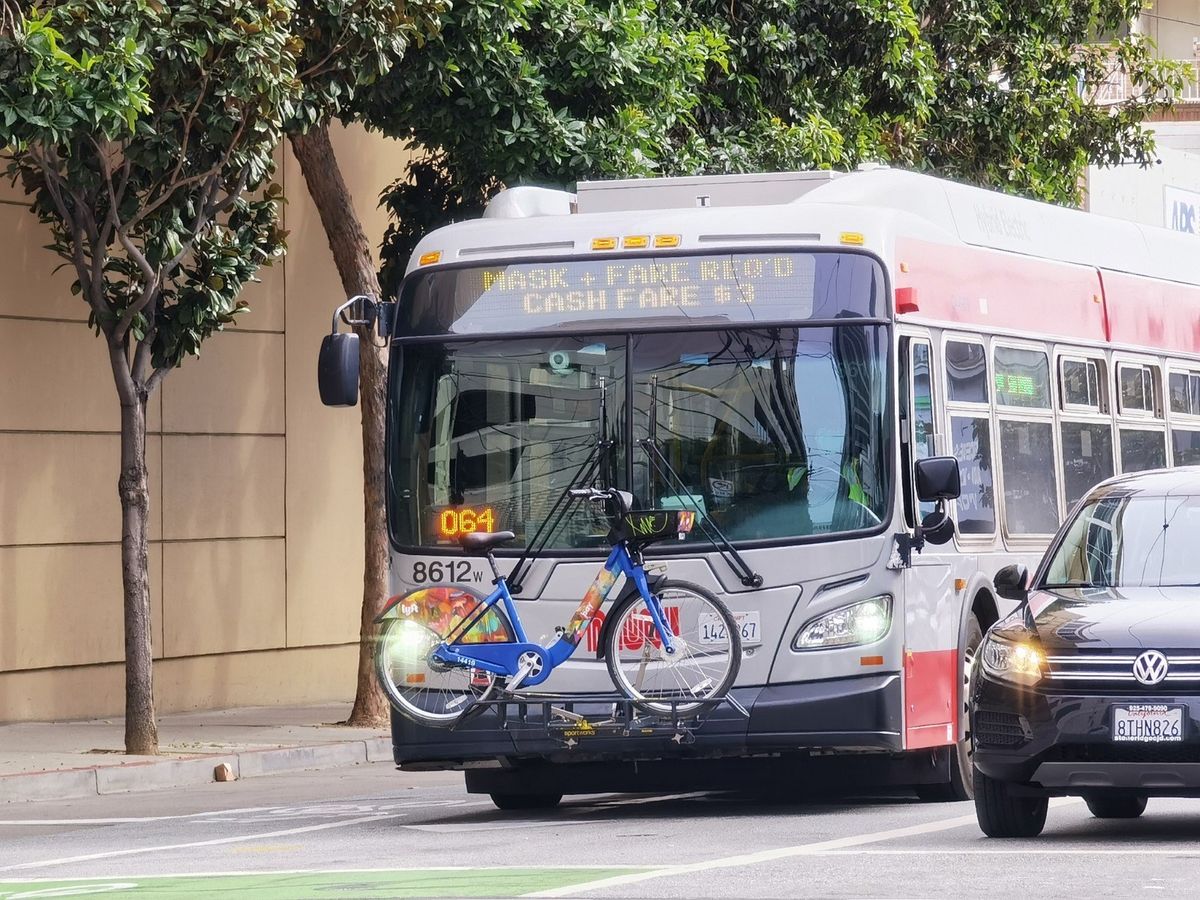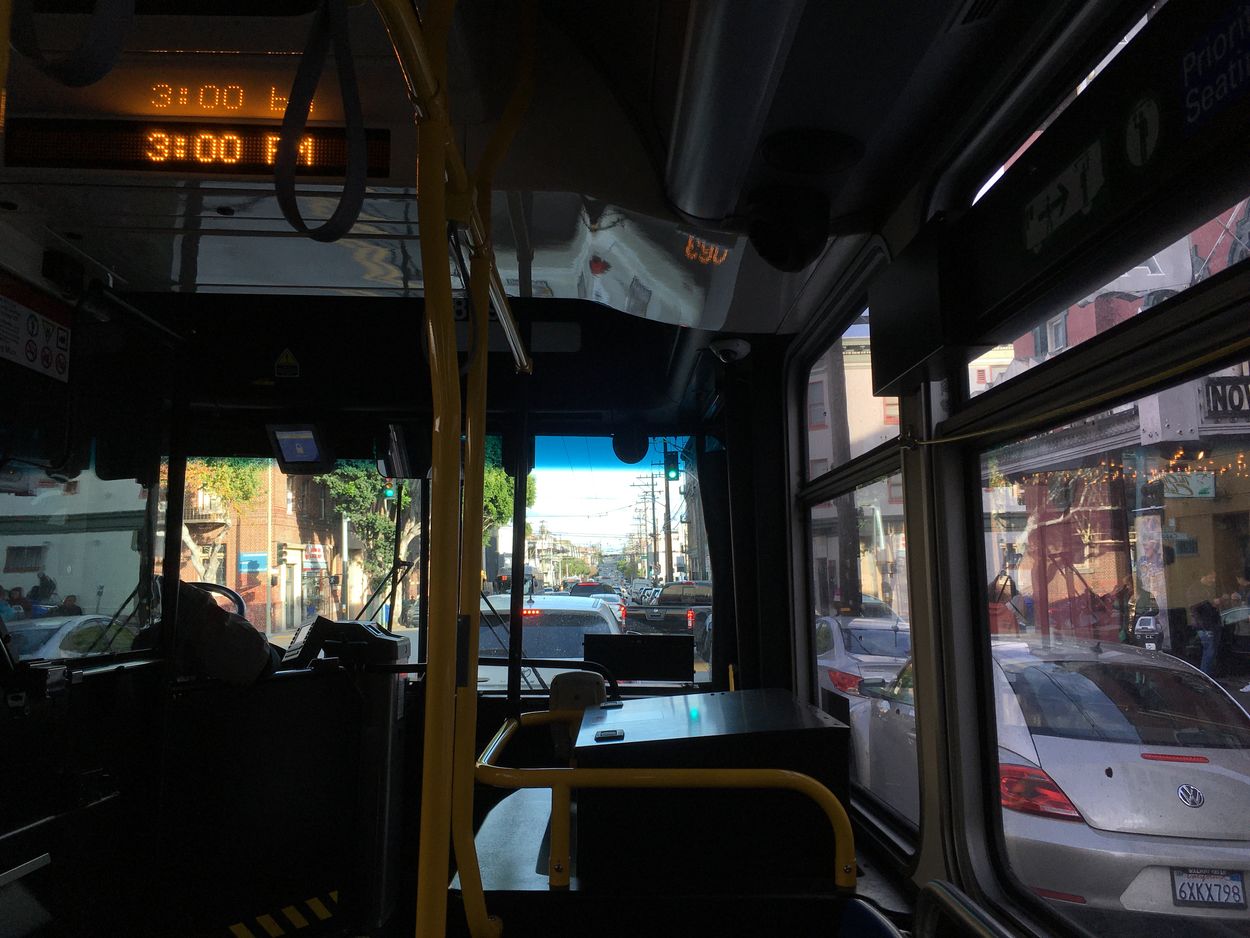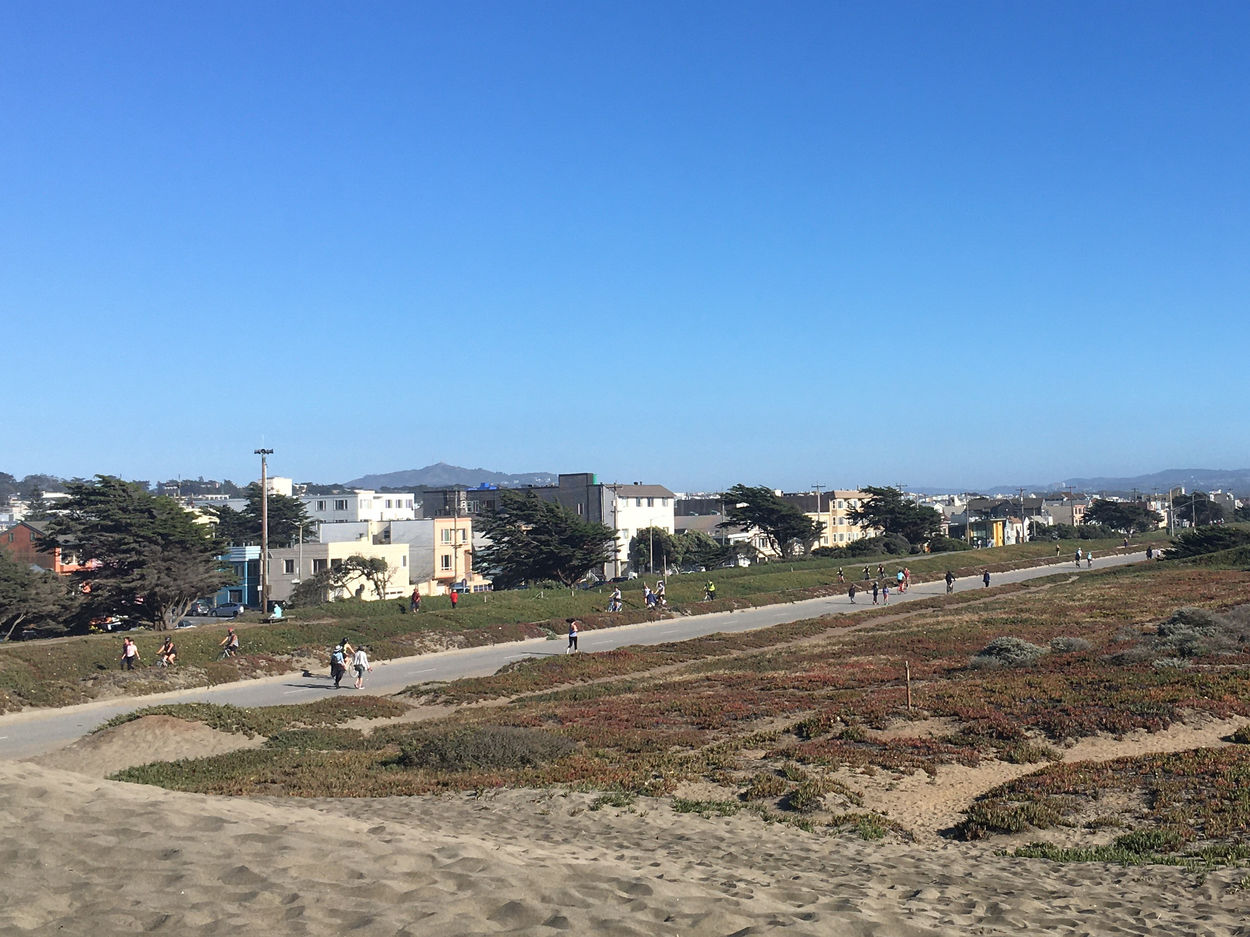Recommitting to Transit First in San Francisco
March 22, 2021

San Francisco’s Transit First policy just turned 48 years old. Passed by voters in 1973, it reads like an urbanist’s wish list, unabashedly calling for limited street space to be prioritized for walking, biking and transit. Cars and parking are only mentioned in order to explicitly call out as less important and to be discouraged.
Yet the Transit First policy has become a punchline among advocates because of its obvious incongruity with how our city actually manages its streets. Cars seem to be parked in every square inch of the city; anywhere a car can physically fit, there one is. Residential sidewalks are warped and pockmarked with driveways that lead to blank garage walls. Bike lanes disappear two blocks shy of connecting with other bike lanes. Intersections are massive seas of asphalt. Light rail vehicles share stops with parking spaces, so that a recorded voice has to warn riders, “Watch for traffic when exiting.”
Rather than pursue transformative change to this car-centric status quo, the SFMTA is stuck in a rut of making slow (and unsteady) piecemeal improvements. They bring a fixed mindset to their work: some people drive, they always will, and we better not make them mad. How is that working out? Our share of sustainable trips—on bike, foot and transit—improbably targeted for 80% by 2030, has instead fallen to a new low of 47% in the last survey.
Making everyone happy
Even Director of Transportation Jeffrey Tumlin, who has introduced many good ideas and improved the agency’s operations since assuming his post in late 2019, has shown signs of an incrementalist, fatalist mindset. Tumlin’s philosophy is that it’s his job to “make everyone equally unhappy”; in other words, to strike a compromise between the sustainable city envisioned by advocates and the car-centric city some drivers and merchant groups want to preserve. But compromise is not what the voters who passed and repeatedly affirmed the Transit First policy called for.
More importantly, the point of transformative change away from car dependence is that it can make everyone, in the long run, happier. Just because someone’s driving doesn’t mean they’d like to be. Many San Franciscans reluctantly drive because transit doesn’t work for their commute, or they don’t feel safe letting their kid walk or bike to school on car-clogged streets.
Individual San Franciscans are the experts on their own commutes. They have valuable insight on gaps in the transit network. If they’ve tried biking, they know exactly where it was that the bike lane disappeared, forced them into traffic and traumatized them out of riding in the city again. That’s feedback SFMTA staff can take back to headquarters and use to improve sustainable transportation in the city, in keeping with Transit First. It’s literally their job.

Too rarely does SFMTA listen to these stories, or ask these questions. What happens instead? Planners timidly present a proposal for a bus lane or protected bike lane, a la carte, devoid of a broader narrative around improving the city through mode shift. They stress they’ve done all they can to minimize parking loss, and beg the neighbors to deign to allow 16 spaces or whatever to be removed. Inevitably, someone complains they need the parking. A planner makes a tick in the “opposition” column, and it’s on to the next conversation at the open house. Back at headquarters, the opposition is sized up and, if it’s too large, the team starts thinking how to water down the project’s safety or transit benefits to retain more parking.
A watered-down plan, like giving a congested street bus lanes in one direction only, or an unprotected and disappearing bike lane, can achieve the worst of both worlds. It makes driving harder, but fails to improve transit service or safety enough to get drivers onto alternatives. The agency has indeed made everyone unhappy, but that’s not a sign it did its job. Quite the opposite.
Fewer cars is good
What’s missing from SFMTA’s overall approach is an effort to directly remove car infrastructure as a goal in itself. I must be fair: they do remove vehicle lane-miles and on-street parking spaces. This, however, comes as a side effect of implementing a bike lane, bus lane, bulbout, or road diet for pedestrian safety. They keep any removed car infrastructure to the minimum necessary for the project to be deemed successful, and apologize for it as if it were a necessary evil.1
Removing car infrastructure is a good. Period. It might sound aggressive and unpopular to say that, but if you frame it right, people will agree.
Even those happy to drive in the city are far from happy about other people’s cars. Look at the overwhelming support for Slow Streets from residents on those streets. On corridors like Lake, Page and Shotwell, it’s over 80% approval, an unheard-of approval rate.

Look at the detractors too, and the nature of their complaints. The minority who aren’t convinced about the Slow Street on Lake are citing more cars a block over on California. The Page bikeway faced concerns of increased drivers taking side streets to Oak. And opposition to today’s Great Walkway doesn’t dispute the fact that it transformed a noisy highway into a beautiful public space, but centers on more alleged traffic on the Lower Great Highway and other parallel streets.2
The advocates and critics agree on one big thing. Too many cars is a problem. When it’s our street, we all understand that the more cars, the more dangerous and unpleasant. Now, to live up to Transit First and bring ambitious mode shift goals into the realm of plausibility, SFMTA needs to apply that shared insight citywide. Help us quit cars, and work toward fewer cars on everyone’s street.
-
Slow Streets, the most wide-ranging change to city streets in recent years, remove no parking. But the diverters, plazas and green space suggested in the 2014 Green Connections plan—the template for Slow Streets—would take spaces away. As the SFMTA begins to make some Slow Streets permanent, we’ll see whether they implement any of these designs, or shy away from them and do the minimum possible. ↩
-
To SFMTA’s credit, they’re working to calm traffic around the neighborhood rather than backpedal on Great Walkway. ↩
